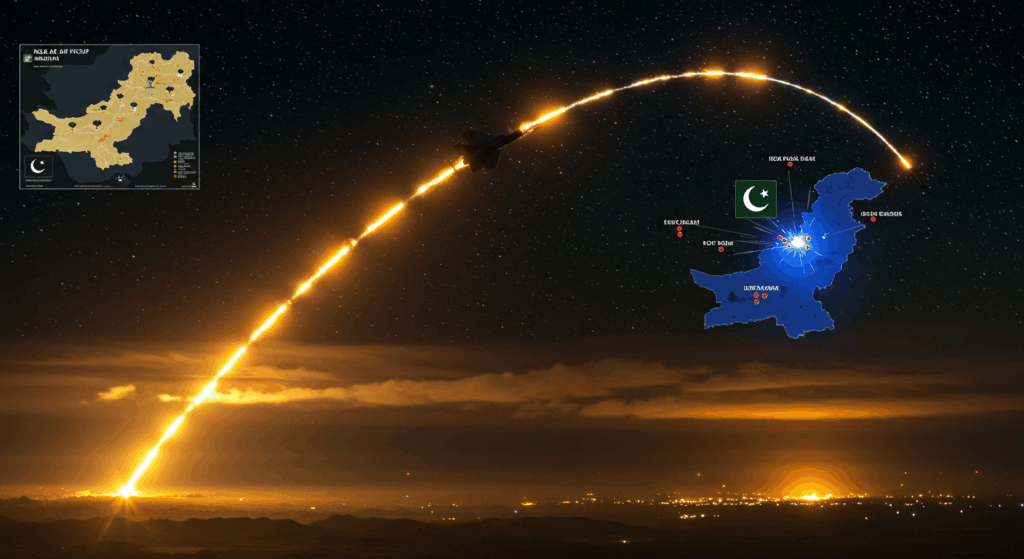Operation Sindoor has set the world abuzz, trending globally as India’s most audacious military operation since the 1971 war. Launched on May 7, 2025, this precision strike targeted terrorist infrastructure in Pakistan and Pakistan-occupied Jammu and Kashmir (PoJK), avenging the tragic Pahalgam terror attack that killed 26 civilians. From its symbolic name to its strategic execution, Operation Sindoor marks a seismic shift in India’s counter-terrorism doctrine, drawing both praise and scrutiny worldwide. This article dives into the operation’s details, its geopolitical ripples, and why it’s a defining moment in modern warfare.
The Genesis of Operation Sindoor: A Response to Pahalgam

On April 22, 2025, a terrorist attack in Pahalgam, Jammu and Kashmir, claimed 26 lives, mostly tourists, in Baisaran Valley. Indian intelligence linked the massacre to Pakistan-based groups like Lashkar-e-Taiba (LeT) and Jaish-e-Mohammed (JeM). In response, India launched Operation Sindoor, a tri-service offensive targeting nine terror hubs across Pakistan and PoJK, including Muzaffarabad, Bahawalpur, and Kotli. The operation’s name, Sindoor—vermilion powder symbolizing Hindu marital bonds—paid tribute to the widows of the attack, notably Himanshi Narwal, whose grief became a national symbol.
For more on global security, see NovexaHub’s hidden tech dangers guide.
Precision and Power: How Operation Sindoor Unfolded

Operation Sindoor was a technological marvel, executed in a 25-minute window from 1:05 to 1:30 AM on May 7, 2025. Indian forces deployed SCALP cruise missiles, HAMMER precision-guided bombs, and loitering munitions, striking targets like LeT’s Markaz Taiba in Muridke and JeM’s Markaz Subhan Allah in Bahawalpur. Over 100 terrorists, including JeM leader Abdul Rauf Azhar, were killed, dealing a blow to networks tied to the 2008 Mumbai attacks and the 1999 IC-814 hijacking.
India’s “zero-intrusion strategy” avoided Pakistani military sites to minimize escalation, yet exposed gaps in Pakistan’s air defense grid. Videos released by India showed devastating damage to terror camps and even Pakistani military bases like Nur Khan in Rawalpindi.
Global Reactions: Support and Calls for Restraint

Operation Sindoor reshaped global narratives on terrorism. Israel and some Indian-American lawmakers backed India’s right to self-defense, while the U.S., UK, and France urged restraint, with President Trump calling the clashes “a shame.” China expressed “regret,” aligning with Pakistan, while Russia condemned terrorism but called for peace. The UN’s Antonio Guterres warned against a nuclear confrontation, highlighting the stakes between the two nuclear-armed neighbors.
Social media amplified the operation’s reach, with #OperationSindoor trending worldwide. However, Pakistan launched a disinformation campaign, claiming civilian casualties and downed Indian jets, which India debunked. For more on disinformation, check NovexaHub’s AI sustainability guide.
The Symbolism of Sindoor: A Cultural and Emotional Resonance

The name Operation Sindoor carries profound cultural weight, symbolizing India’s resolve to avenge the Pahalgam victims, particularly the women widowed in the attack. Critics, like feminist historian V. Geetha, argue it reinforces gendered narratives in Hindu nationalism, portraying women as symbols of sacrifice. Yet, the operation’s imagery—spilled sindoor resembling blood—struck a chord, galvanizing national unity.
Geopolitical Fallout: A New Era of India-Pakistan Tensions
Pakistan’s retaliation, including drone attacks and shelling along the Line of Control, killed 12 Indian civilians and one soldier. India’s suspension of the Indus Waters Treaty and the Kartarpur Corridor signaled a diplomatic freeze. The operation de-hyphenated India-Pakistan ties from the Kashmir issue, framing it as a fight against terrorism, a narrative that won India global support.
As CNN notes, the conflict risks spiraling, with both nations accusing each other of ceasefire violations despite a fragile truce on May 10, 2025. NovexaHub’s sexiest tech trends explores how technology shapes modern conflicts.
The Legacy of Operation Sindoor

Operation Sindoor is a watershed moment, showcasing India’s military prowess and diplomatic finesse. It redefined India’s strategic posture, asserting that no terror hub is beyond reach. The operation’s success—neutralizing over 100 terrorists, exposing Pakistan’s complicity, and securing global backing—marks a new chapter in counter-terrorism. Yet, the risk of escalation looms, with nuclear capabilities amplifying the stakes.
For more on India’s evolving role, read NovexaHub’s climate tech guide.
Conclusion
Operation Sindoor is more than a military triumph; it’s a symbol of India’s resolve, a cultural tribute, and a geopolitical statement. By targeting terror with precision and winning global support, India has redrawn the lines of modern warfare. As tensions simmer, the world watches, hoping for de-escalation. One thing is clear: Operation Sindoor has etched its name in history, trending worldwide as a testament to India’s unyielding fight against terrorism.

